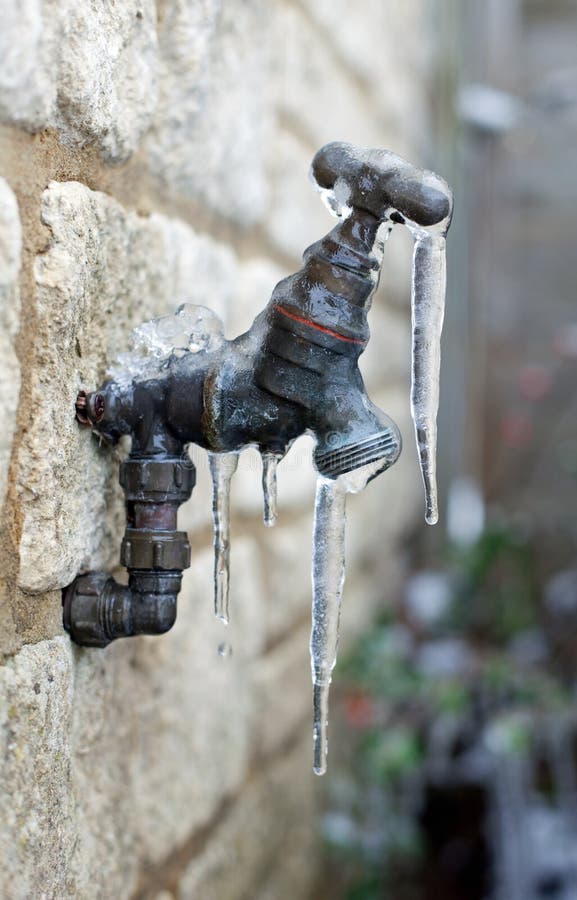Protecting Against Frozen Plumbing in Winter: Expert Strategies
Protecting Against Frozen Plumbing in Winter: Expert Strategies
Blog Article
We've come across this post pertaining to Preventing and dealing with frozen pipes down the page on the internet and accepted it made perfect sense to quickly share it with you on this page.

Winter can ruin your plumbing, especially by freezing pipelines. Below's how to avoid it from taking place and what to do if it does.
Intro
As temperature levels drop, the risk of icy pipes increases, potentially bring about costly repair services and water damage. Comprehending just how to stop icy pipelines is essential for house owners in cool environments.
Prevention Tips
Protecting prone pipes
Cover pipes in insulation sleeves or make use of warm tape to safeguard them from freezing temperatures. Focus on pipelines in unheated or outside locations of the home.
Heating methods
Maintain interior areas properly warmed, especially areas with pipes. Open up cabinet doors to allow warm air to flow around pipelines under sinks.
How to identify frozen pipelines
Try to find lowered water circulation from faucets, unusual odors or noises from pipes, and visible frost on exposed pipes.
Long-Term Solutions
Structural modifications
Think about rerouting pipes away from exterior wall surfaces or unheated locations. Include additional insulation to attics, basements, and crawl spaces.
Upgrading insulation
Buy high-grade insulation for pipelines, attics, and walls. Appropriate insulation aids keep consistent temperature levels and minimizes the threat of icy pipes.
Securing Outdoor Pipes
Garden pipes and outdoor faucets
Detach and drain yard hoses prior to winter season. Install frost-proof faucets or cover outside taps with protected caps.
Understanding Icy Pipes
What creates pipes to freeze?
Pipelines freeze when subjected to temperatures listed below 32 ° F (0 ° C) for extended periods. As water inside the pipelines ices up, it expands, putting pressure on the pipeline wall surfaces and possibly causing them to burst.
Dangers and problems
Icy pipelines can bring about supply of water interruptions, residential or commercial property damage, and expensive repair work. Burst pipes can flood homes and cause extensive architectural damages.
Indicators of Frozen Water Lines
Determining frozen pipes early can stop them from breaking.
What to Do If Your Pipelines Freeze
Immediate actions to take
If you suspect icy pipes, maintain taps open to eliminate pressure as the ice melts. Make use of a hairdryer or towels taken in hot water to thaw pipes gradually.
Final thought
Stopping frozen pipes requires proactive steps and quick feedbacks. By understanding the reasons, indicators, and safety nets, homeowners can shield their plumbing during winter.
5 Ways to Prevent Frozen Pipes
Drain Outdoor Faucets and Disconnect Hoses
First, close the shut-off valve that controls the flow of water in the pipe to your outdoor faucet. Then, head outside to disconnect and drain your hose and open the outdoor faucet to allow the water to completely drain out of the line. Turn off the faucet when done. Finally, head back to the shut-off valve and drain the remaining water inside the pipe into a bucket or container. Additionally, if you have a home irrigation system, you should consider hiring an expert to clear the system of water each year.
Insulate Pipes
One of the best and most cost-effective methods for preventing frozen water pipes is to wrap your pipes with insulation. This is especially important for areas in your home that aren’t exposed to heat, such as an attic. We suggest using foam sleeves, which can typically be found at your local hardware store.
Keep Heat Running at 65
Your pipes are located inside your walls, and the temperature there is much colder than the rest of the house. To prevent your pipes from freezing, The Insurance Information Institute suggests that you keep your home heated to at least 65 degrees, even when traveling. You may want to invest in smart devices that can keep an eye on the temperature in your home while you’re away.
Leave Water Dripping
Moving water — even a small trickle — can prevent ice from forming inside your pipes. When freezing temps are imminent, start a drip of water from all faucets that serve exposed pipes. Leaving a few faucets running will also help relieve pressure inside the pipes and help prevent a rupture if the water inside freezes.
Open Cupboard Doors
Warm your kitchen and bathroom pipes by opening cupboards and vanities. You should also leave your interior doors ajar to help warm air circulate evenly throughout your home.

Do you enjoy more info about How to prepare your home plumbing for winter weather? Place a short review down below. We'd be glad to see your opinions about this article. Hoping that you visit us again in the future. Liked our piece? Please quickly share it. Help someone else locate it. We value your readership.
Click Here Report this page